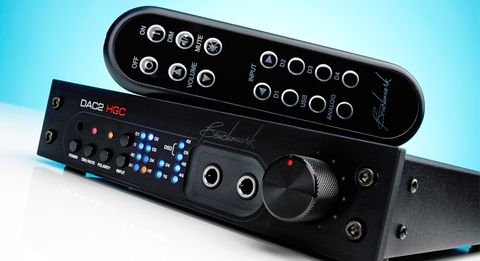Benchmark has real confidence in the DAC2 HGC’s electrical design. How do we know? Why else would the company fill a third of the 67-page manual with performance graphs and specification?
There are no fewer than 16 graphs covering a wide range of parameters - including frequency response and jitter tolerance, right through to a series of distortion measurements.
While all this information is nice to have (and shows Benchmark’s thoroughness in designing the product), it doesn’t give any indication as to whether the DAC2 HGC is a good listen.
Fortunately, it is. The DAC/headphone amplifier category has exploded over the last five years or so. While these products started off as relatively budget devices we’re seeing prices (and performance levels) being pushed.
The DAC 2 HGC is at the forefront of that premium wave.
Features
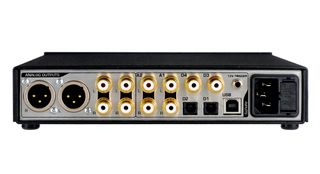
What do you get for your £1750? You get a high-grade digital-to-analogue converter that uses four Sabre 32-bit D/A converters per channel for PCM duties.
It’ll accept 24-bit/192kHz signals through USB and co-ax dropping to a 96kHz sampling rate limit for the optical input.
The quad D/A chip arrangement is mirrored for DSD data streams. This means the DAC2 HGC doesn’t need to convert DSD files into PCM before the number crunching begins, which will please purists.
Take a look at the DAC2’s crowded back panel and you’ll also find analogue users are well catered for. There’s a pair of single-ended inputs and a trio of outputs including a balanced option.

Usually, digital-based products such as the DAC2 tend to convert analogue signals into the digital domain for processing purposes.
But Benchmark has, once again, chosen the purist route of keeping analogue signals unconverted all the way through.
Such a design involves a rather clever volume control arrangement in which a traditional motor-driven volume potentiometer not only alters the analogue music signal conventionally, but also controls digital attenuation too.
It’s where the ‘HGC’ in the product’s name comes from – Hybrid Gain Control.
Design and build
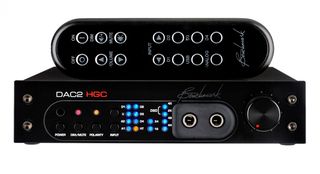
The front panel is a riot of LEDs. These indicate the input selected as well as the signal’s word length and sampling rate. We would have preferred a clearer, not to mention neater, display but the collection of LEDs does its job.
The DAC2’s overall build is good; though the simple bent-metal folded chassis and exposed bolts and screws give it a cottage-industry feel. There’s none of the luxury aura we’d hope for at the price.
You’ll also find a pair of 6.3mm headphone outputs, and for once we can’t really notice any degradation of performance when both outputs are in use.
It’s a sign that the headphone-amplifier section is well design and has plenty of drive. The left-side output includes a switch that mutes the analogue outputs on the rear panel, which is handy if you’re using the DAC2 as a preamp.
Partnering kit

A unit like this demands good quality sources – we use our reference Naim NDS/555PS streamer and Macbook.
The laptop is loaded with Pure Music software and packed with a range of material from 192kps files of Eminem’s Encore set right through to Beethoven’s Piano Concertos (Nos 3, 4 and 5) in 24-bit/192kHz.
Headphones choice is equally important.
The bulk of the test involved AKG’s superb K812s and Grado’s PS500s, but we also spent a decent amount of time with B&W’s P7s and Audio Technica’s ATH-W1000X. It’s a good spread of products, designed to shine a light on the Benchmark’s capabilities.
The DAC2 HGC was also tested in our main reference stereo system. This includes Bryston’s BP26/4B SST2 pre/power and ATC’s SCM50 speakers.
Performance
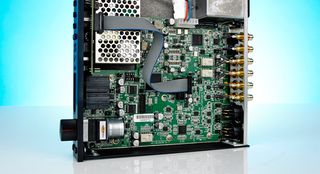
This Benchmark is a fine performer. The first quality that grabs our attention is its tonal balance. It’s as even as we’ve heard from a DAC at this price, giving each part of the frequency spectrum just the right amount of emphasis.
This in turn helps to make voices and instruments more convincing, particularly when it’s allied to such a high levels of resolution.
If you’re the kind of listener that likes to analyse recordings, the Benchmark is for you. Rarely do we hear a recording laid bare this way; subtle instrumental strands are easy to follow and aren’t lost when the music gets complicated.
It helps that the DAC 2 has an admirably quiet noise floor; low-level details aren’t submerged in the circuitry’s self-generated electronic hash and the dynamic range of the presentation benefits too.
The positive repercussions of this are felt in most music, but most of all in material with wide-ranging dynamic extremes such as the Jaws OST from John Williams or Tchaikovsky’s 1812 Overture.
It’s a clean, precise presentation but avoids the clinical edge that often goes along with such an outlook.
Despite all the insight, the DAC2 isn’t prone to taking recordings apart either. It’s transparent enough to reveal flaws in a recording but refined enough to stop this being an issue.
Eminem’s is about as harsh as recordings get, but the Benchmark keeps it listenable – no small feat. Our impression of the product doesn’t change as we try different file types.
We run through a range of music from Michael Jackson’s Thriller (24-bit/176.4kHz) to Stevie Wonder’s Innervisions on DSD, and we never once feel the Benchmark gives preferential treatment to a specific file type.
One of the biggest surprises is just how good this digital preamp sounds with analogue sources.
Using the Naim NDS’s analogue outputs there are all the good qualities we noticed through the digital inputs plus a lovely sense of fluidity and body. Anyone buying this to play analogue sources isn’t going to be disappointed.
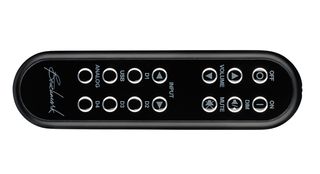
Flaws? Perhaps that’s too strong a word, but there are certainly areas where we feel rival designs such as Chord’s Hugo do better.
We think the Benchmark could do with a stronger sense of drive and convey the ebb and flow of recordings better. This would help it render rhythmical elements in music with more conviction.
While the DAC2 HGC has a superb headphone output we are less pleased with how it sounds when used as a preamp in our main reference system.
The good points are still present but are coupled with a thinner, less substantial sound that lacks the authority we want.
Verdict
Overall, the Benchmark DAC2 HGC is a talented product. It’s a fabulous headphone amplifier, great DAC and a pretty decent preamp.
If your preference is analysis, we doubt you’ll find better for the money.
But, if you want something that will make you want to dance along too, there are cheaper contenders that will serve you better.
